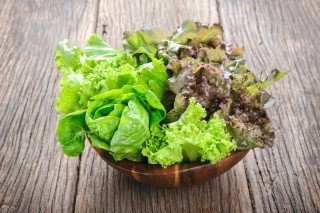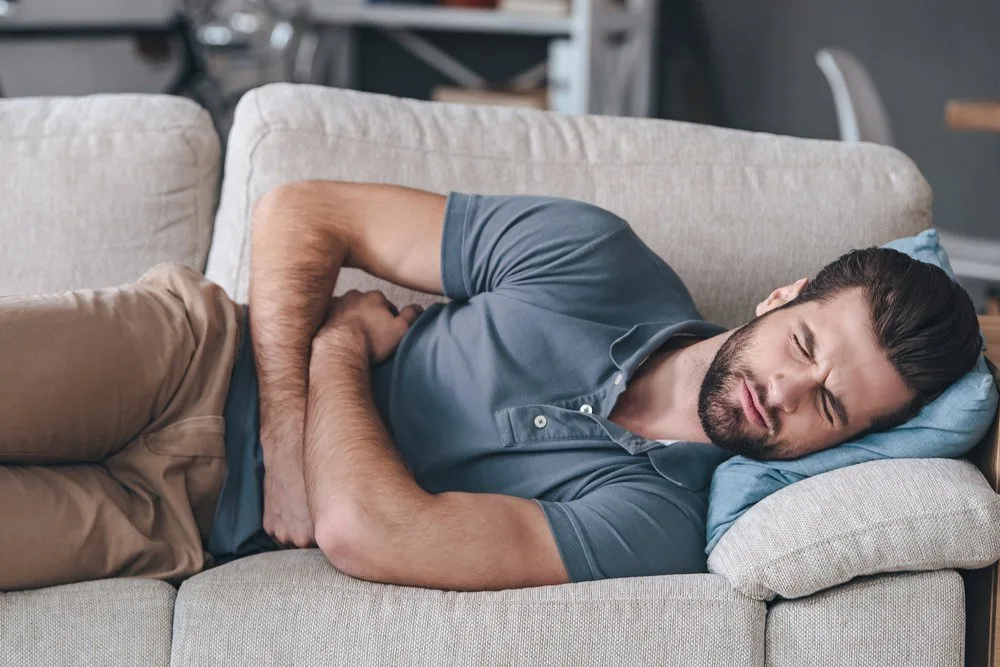Picture this – you’ve been planning all year for your big vacation to Europe. You land after an exhausting, 15-hour journey and go straight to the donor kebab stand you see on the street corner. The next morning, something doesn’t feel quite right… Instead of visiting the Brandenburg Gate, you’re stuck in your hotel bathroom. This is every traveler’s nightmare. Don’t lose precious vacation time due to foodborne illnesses such as diarrhea. Treat or even avoid it naturally with monolaurin – a natural antibacterial supplement made from coconut oil. Longevity Live Partner Content.
The causes of traveler’s diarrhea
Traveler’s diarrhea, or traveler’s tummy, is an illness that affects the digestive tract. You can get traveler’s diarrhea from eating undercooked food, or food that was prepared or stored in unsanitary conditions.
There are several types of bacteria that can cause stomach illnesses: There are well-known bacteria like E.coli and Salmonella, and then lesser-known but equally treacherous ones such as Clostridium perfringens and Campylobacter jejuni (we’ll get into each of them later in the article).
Infections from these bacteria can cause similar symptoms, including abdominal cramps, vomiting, diarrhea, and occasional fever. The primary causes of these illnesses are contaminated water or meat, raw or undercooked animal products, and unclean raw produce.
 Preventing traveler’s diarrhea
Preventing traveler’s diarrhea
There are a few ways to avoid traveler’s diarrhea. First, always be conscious of the storage of your food and drink and how they are prepared, even if it seems like other people are consuming them.
Be mindful of ice made from local tap water, veggies that were washed using unclean water, food that has been sitting out for a long time, and of course undercooked meat. If you end up getting a bacterial infection, there are some over-the-counter remedies that can help treat the symptoms, but if things get worse you can use wide-spectrum antibiotics to wipe out the culprit.
However, wouldn’t it be better if you didn’t destroy your healthy gut flora with antibiotics? Even better, what if you could avoid getting sick in the first place?
Introduction to Monolaurin and Lauric Acid
Monolaurin is a medium-chain fatty acid that is made from lauric acid. Lauric acid occurs naturally in coconut oil and mother’s breast milk, but can also be taken as a dietary supplement, as studies suggest it contains antibacterial properties in lab studies.
Monolaurin possesses strong antibacterial properties.
In fact, “The antibacterial activity of monolaurin in vitro is well documented. Monolaurin is effective against a wide range of gram-positive, gram-negative, and acid-fast organisms.” [Ref #4] Monolaurin has been used since the 1960s in food and cosmetic production due to its antimicrobial properties, and recently its popularity as a dietary supplement has grown.
Taking monolaurin as a supplement when faced with a bacterial infection may help.

DimaBerlin/Shutterstock
Monolaurin vs the Bacteria Which Cause Traveler’s Diarrhea
Since the cause of a traveler’s tummy is bacteria, monolaurin’s antibacterial properties are important. There have been studies focusing specifically on monolaurin’s effect on each of the bacteria which cause traveler’s diarrhea:
Monolaurin and E. coli
Monolaurin has been effective at inhibiting this pathogen and some scientists say that it could be used as a new natural preservative, replacing the chemical additives that people currently rely on. “We have shown that monolaurin has antibacterial activity against Escherichia coli …use of monolaurin as the natural antibacterial substance may be a proper replacement for chemical preservatives.” [Ref #5] “A monolaurin system inhibited the growth of … Escherichia coli… and will be regarded as a ‘natural’ antimicrobial preservative.” [Ref #6] “Escherichia coli had progressively fewer colonial growths at increasing monolaurin concentrations” [Ref #7]
Monolaurin and C. jejuni
Campylobacter jejuni is “the most frequently diagnosed bacterial cause of human gastroenteritis in the United States”. [Ref #8] Fortunately, an experiment studying the bactericidal potential of monolaurin found that it is potent against C. jejuni. “C. jejuni … bacteria were highly susceptible to monolaurin” [Ref #9]
Monolaurin and C. perfringens
Another little-mentioned bacterium, Clostridium perfringens is a common culprit in food poisoning and causes around 1 million illnesses in the United States over the course of a year. [Ref #10] Monolaurin has demonstrated inhibitory potential against this pathogen as well. Out of a number of fatty acids, lauric acid proved the most effective. “Cl. perfringens were inhibited by medium-chain fatty acids (lauric acid) … Growth of “Cl. perfringens was inhibited also by monoglyceride of lauric acid” [Ref #11]
Monolaurin and Salmonella
In research, monolaurin was also effective against Salmonella, especially in a salt form where it actually displayed the potential to “reduce intestinal colonization by opportunistic pathogens such as Salmonella or E. coli and its ability to modulate colonic microbiota.” [Ref #12] Other experiments saw lauric acid impeding Salmonella. “Monolaurin inhibited growth of Salmonella sp. by 91%…” [Ref #13] “The results showed that lauric acid can inhibit Salmonella sp.” [Ref #14]
The bottom line
Traveler’s diarrhea is a nuisance and can, in extreme cases, be dangerous. Scientific research into monolaurin’s effects on travelers’ tummies is exciting, especially as it has the potential to be both a preventative substance and a potential treatment.
If you’re looking for an award-winning and trusted brand of monolaurin, check out Natural Cure Labs. Natural Cure Labs (also known as Palmara Health) monolaurin has been helping tummies since 2015 and offered three different monolaurin products: Premium Monolaurin 600 mg, Extra Strength Monolaurin 800 mg, and a combination of L-Lysine + Monolaurin. All Natural Cure Labs and Palmara Health products are non-GMO, gluten-free, and vegan. They may be able to save your next vacation!
References
1. “Traveler’s Diarrhea.” Mayo Clinic, Mayo Foundation for Medical Education and Research, 16 May 2019.
2. Switaj, T. L., Winter, K. J., & Christensen, S. R. (2015). Diagnosis and Management of Foodborne Illness. American family physician, 92(5), 358–365.
3. Ezigbo, Veronica O., Mbaegbu Emmanuella A. (2016). Extraction of Lauric Acid from Coconut Oil, Its Applications and Health Implications on Some Microorganisms. African Journal of Education, Science, and Technology.
4. Barker, L. A., Bakkum, B. W., & Chapman, C. (2019). The Clinical Use of Monolaurin as a Dietary Supplement: A Review of the Literature. Journal of chiropractic medicine, 18(4), 305–310. https://doi.org/10.1016/j.jcm.2019.02.004
5. Eshghjoo, S, et al. The Effects of Monolaurin on Ecoli O157:H7 Growth in Dairy Food Products. 4th International Conference on Medical, Biological and Pharmaceutical Sciences, 6 Oct. 2013.
6. Fu, X., Zhang, M., Huang, B., Liu, J., Hu, H. and Feng, F. (2009), Enhancement of Antimicrobial Activities by the Food-Grade Monolaurin Microemulsion System. Journal of Food Process Engineering, 32: 104-111. https://doi.org/10.1111/j.1745- 4530.2007.00209.x
7. Carpo, B. G., Verallo-Rowell, V. M., & Kabara, J. (2007). Novel antibacterial activity of monolaurin compared with conventional antibiotics against organisms from skin infections: an in vitro study. Journal of drugs in dermatology : JDD, 6(10), 991–998.
8. Altekruse, S. F., Stern, N. J., Fields, P. I., & Swerdlow, D. L. (1999). Campylobacter jejuni—An Emerging Foodborne Pathogen. Emerging Infectious Diseases, 5(1), 28- 35. https://doi.org/10.3201/eid0501.990104.
9. Kovanda, L., Zhang, W., Wei, X., Luo, J., Wu, X., Atwill, E. R., Vaessen, S., et al. (2019). In Vitro Antimicrobial Activities of Organic Acids and Their Derivatives on Several Species of Gram-Negative and Gram-Positive Bacteria. Molecules, 24(20), 3770. MDPI AG. Retrieved from http://dx.doi.org/10.3390/molecules24203770
10. “C. Perfringens.” Centers for Disease Control and Prevention, Centers for Disease Control and Prevention, 18 May 2021.
11. Skrivanova, E., Marounek, M., Benda, V., & Brezina, P. (2007). Susceptibility of Escherichia coli, Salmonella sp., and Clostridium perfringens to organic acids and monolaurin. Veterinarni Medicina, 51(3), 81–88. https://doi.org/10.17221/5524- VETMED
12. López-Colom, P., Castillejos, L., Rodríguez-Sorrento, A., Puyalto, M., Mallo, J. J., & Martín-Orúe, S. M. (2019). Efficacy of medium-chain fatty acid salts distilled from coconut oil against two enteric pathogen challenges in weanling piglets. Journal of animal science and biotechnology, 10, 89. https://doi.org/10.1186/s40104-019-0393-y
13. Mansour, E.O., Hinton Jr, A., Jackson, C.R., Reddy, G.P. (2008). Comparison of the effect of monolaurin on the growth and survival of Enterococcus and Salmonella [abstract]. Conference of Research Workers in Animal Diseases. Chicago, IL. P110(45P).
14. Su’i, Moh & Sumaryati, Enny & Prasetyo, Ricky & Eric, Dan. (2015). Anti Bacteria Activities of Lauric Acid from Coconut Endosperm (Hydolysed using lipase Endogeneus). Advances in Environmental Biology. 9. 45-49.
Who is the author?

Enzo Ferrel is a truth seeker and health enthusiast with an internet marketing background.



![women [longevity live]](https://longevitylive.com/wp-content/uploads/2020/01/photo-of-women-walking-down-the-street-1116984-100x100.jpg)










